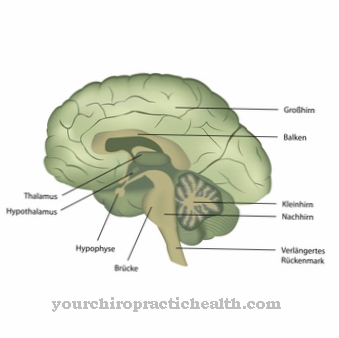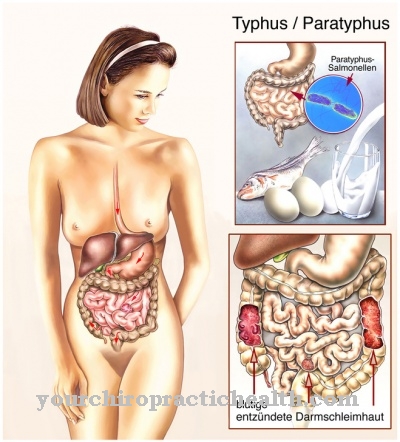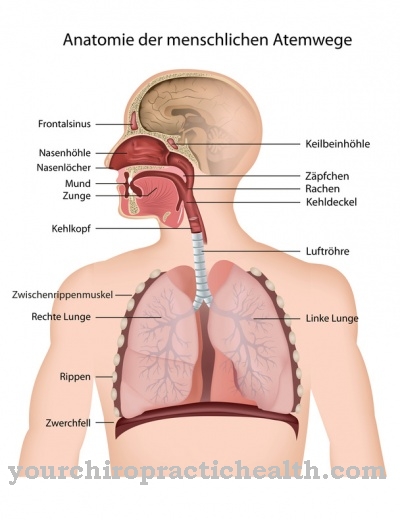The Transcytosis is a type of substance transport in which a certain substance is absorbed into the cell via endocytosis and released back into the extracellular space via exocytosis. Transcytosis is receptor-controlled and takes place primarily in the epithelium of the intestine, at the blood-brain barrier and in the placenta. The consequences of a transcytosis disorder depend on the location.
What is transcytosis?

The area behind a biomembrane is a largely controlled area that shields the inside from the outside and enables the cell, for example, to build up and later maintain its cell environment. This specific milieu is vital for cells because it enables their essential functional processes.
The double layer of a biological membrane consists of phospholipids and can therefore only be passed by gases and tiny, uncharged molecules. Ions and other substances with biological effectiveness cannot easily pass through this layer. Due to their hydrophilic nature, they are held up by the lipid bilayer of the biomembrane like a barrier.
For this reason, transport mechanisms are necessary that smuggle certain ions into certain cells. Such mechanisms correspond to the mechanisms of membrane transport, which transports substances through a biological membrane. Membrane transport can correspond to transmembrane transport in the sense of diffusion, active or passive transport.
In addition to the transmembrane transport, so-called membrane-relocating material transports take place in the human body. There are three types of these membrane-displacing transports. In addition to endocytosis and exocytosis, transcytosis is one of them. In medicine, transcytosis means the transport of substances by means of receptors. Substances are transported through cells with the help of receptors.
Function & task
Transcytosis is also called Cytopempsis designated. It is a transport of substances with the help of receptors. Most of the human body's receptors are cellular receptors that mostly correspond to proteins. Some of them are in the form of membrane receptors within the cell membrane, for example the opioid receptors. Nuclear receptors are located in the cytosol or nucleus of a cell, like steroid receptors, for example.
All receptors in the human body have a specific fit for certain molecules. The fit can be tailored to ligands or larger parts of the molecule. The binding of substances to receptors works according to the fit-in principle: only certain substances fit certain receptors.
The transport process of transcytosis makes use of the structure and the specific function of receptors. Material outside a specific biomembrane or cell can be transported through the respective cell using receptor-dependent transport. The principles of endocytosis and exocytosis thus meet in transcytosis.
In endocytosis, non-cellular materials are invaded and constricted in the cell, as certain parts of the cell membrane turn inside out. The exocytosis in turn removes substances from the cell. Both principles are relevant for transcytosis insofar as the substance must first enter the cell in this type of substance transport in order to exit again on the other side.
As with endocytosis, vesicles are formed during the uptake of substances during transcytosis. Similar to the processes of exocytosis, the vesicles with the substance they contain are released to the outside again during transcytosis. In transcytosis, this outward transport corresponds to the vesicles being passed on to the neighboring cell or into the extracellular space. Nothing changes in the content and composition of the transported substances.
Transcytosis is mainly carried out by the epithelial cells of the vessels and the cells of the intestinal epithelium. Another transport of substances is not possible in these cases because of the tight junctions in the spaces between the cells. Transcytosis receptors are, for example, the membrane-bound Fc receptors that are located in the placenta. Such receptors are also present on the apical child's intestinal epithelium, where they transport maternal IgG to the fetus via transcytosis. In addition, receptor-mediated transcytosis takes place at the blood-brain barrier.
During transcytosis, the receptor recognizes the substance in question and takes it into the cell via endocytosis. The passage through the cell takes place in a vesicle, which is discharged again on the other side of the cell by exocytosis.
Illnesses & ailments
If the processes of transcytosis are impaired, this can have serious health consequences, as this means that numerous substances no longer reach their place of use. A transcytosis disorder during pregnancy, for example, is particularly fatal. The passage of maternal antibodies into the embryo is associated with nest protection. This is a natural protection of newborns against infectious diseases in the context of passive immunization.
In the last weeks of pregnancy, the mother's IgG antibodies cross the placenta by means of transcytosis and reach the child. After delivery, the newborn has basic protection against many pathogens. In the first few weeks after the birth, this protection is the only one available, as the child does not yet produce its own antibodies. After about three months, self-production of the transferred antibodies begins.
If no antibodies are transferred from the mother to the child as part of a disturbed transcytosis, there is no nest protection after birth. The newborn is noticeably susceptible to infectious diseases and may even have to be cared for as an inpatient.
Disturbances in transcytosis at the blood-brain barrier are also fatal. The brain lacks important substances in such disorders. Since the brain is the control center of all body processes, the consequences can be correspondingly severe.


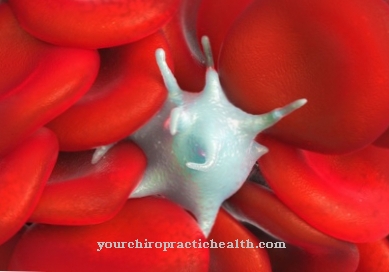

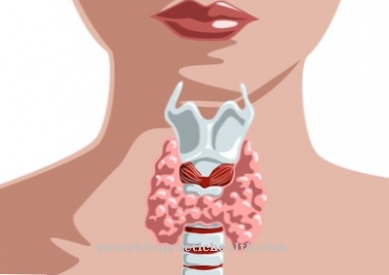




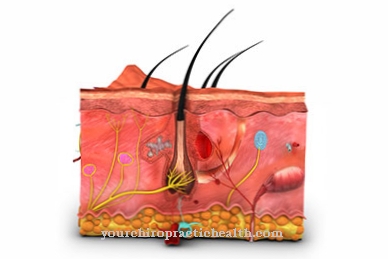
.jpg)









